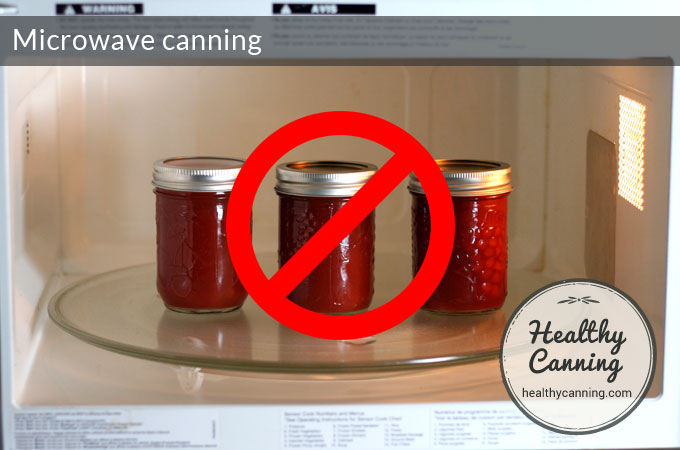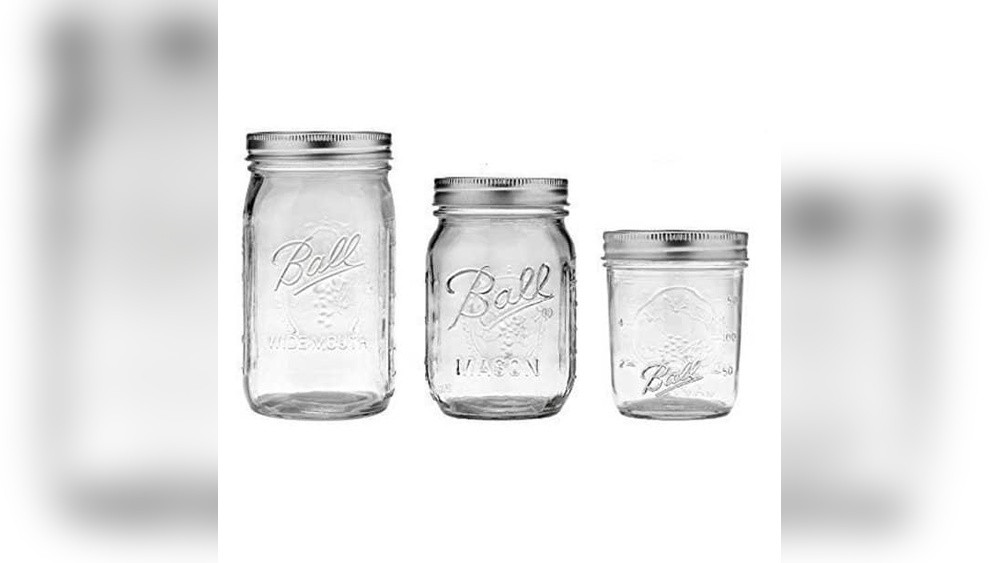Have you ever wondered if it’s safe to heat your food in a Mason jar using the microwave? Maybe you grabbed one from the fridge and thought, “Can I just pop this in the microwave to warm it up?” It’s a common question, and the answer isn’t as simple as yes or no.
Using Mason jars in the microwave can be convenient, but it comes with some important rules you need to know. If you want to avoid cracked glass, spills, or even accidents, keep reading. I’ll walk you through everything you need to know to safely microwave your Mason jars without worry.

Credit: www.healthycanning.com
Microwave Safety Of Mason Jars
Mason jars are popular for storing food and drinks. Many people wonder if these jars are safe to use in a microwave. Glass is generally microwave-safe, but not all mason jars are made the same. Some jars may crack or break due to heat. Understanding microwave safety rules helps avoid accidents and damage.
Metal Lid Removal
Always remove the metal lid before microwaving a mason jar. Metal can cause sparks and fires in the microwave. Only the glass jar should go inside the microwave. After heating, wait a moment before putting the lid back on. This prevents pressure build-up inside the jar.
Microwave-safe Symbols
Check the bottom or sides of the jar for microwave-safe symbols. These symbols look like a microwave or wavy lines. Some jars have words like “microwave safe.” If no symbol is present, avoid microwaving the jar. Using non-microwave-safe glass may cause cracks or breakage.
Heat Duration Limits
Limit the heating time to avoid overheating the jar or its contents. Heat mason jars in short intervals, usually no longer than five minutes. Overheating can cause the glass to break or liquids to boil over. Pause between intervals and stir the contents for even heating.
Handling Hot Liquids
Be very careful when handling hot liquids in a mason jar. Hot liquids can cause burns if spilled. Let the jar cool slightly before removing it from the microwave. Use oven mitts or a thick cloth to hold the jar safely. Avoid shaking or sudden movements to prevent spills.
Risks Of Microwaving Mason Jars
Microwaving mason jars involves several risks that can lead to accidents or damage. Glass jars are not always designed for rapid heating. Sudden temperature changes can cause the glass to break or shatter. Handling broken glass and hot contents can cause serious injuries. Understanding these risks helps you use mason jars safely in the microwave.
Not all mason jars are microwave-safe. Some older jars or those with metal parts pose extra dangers. Careful attention to how you microwave jars reduces the chance of accidents. Below are key risks to consider before putting a mason jar in the microwave.
Thermal Shock Explained
Thermal shock happens when glass heats unevenly or too fast. The glass expands in some areas but not others. This stress causes cracks or sudden breaks. A cold jar placed in a hot microwave is prone to thermal shock. Even small temperature jumps can cause damage. This is why heating mason jars slowly and evenly is important.
Cracks And Chips Concerns
Cracks and chips weaken glass strength. A jar with any damage is more likely to break in the microwave. Heat can worsen existing cracks or create new ones. Small chips may not be visible but still cause failure. Always check jars carefully before microwaving. Discard jars with any signs of damage to stay safe.
Superheating Liquids
Superheating occurs when liquids heat past boiling without bubbling. This can cause sudden boiling or spitting when disturbed. Mason jars are smooth and can trap heat easily. This makes superheating more likely. Hot liquid can erupt and cause burns when you remove the jar. Let liquids cool briefly before handling to avoid this risk.
Alternatives To Microwave Heating
Heating Mason jars in a microwave may not always be the best choice. Glass can crack due to sudden temperature changes. Several safer alternatives exist for warming or sterilizing Mason jars. These methods use gentler heat and reduce the risk of breakage. They also help maintain the jar’s integrity for long-term use.
Using Oven For Warming
Place Mason jars in the oven to warm them slowly. Use a low temperature setting, around 200°F (93°C). Avoid dry heat by adding water to the oven or placing jars in a water bath inside the oven. This prevents glass from breaking due to uneven heating. Always preheat the oven before placing cold jars inside. Slow heating reduces thermal shock and keeps jars safe.
Water Bath Heating Method
Immerse Mason jars in hot or boiling water to heat them gently. Do not drop cold jars directly into boiling water to avoid cracking. Warm jars gradually by placing them in warm water first. Use a jar lifter to remove jars safely after heating. This method is ideal for sterilizing and warming jars without risk of damage.
Dishwasher Sterilization
Run Mason jars through a hot dishwasher cycle for sterilization. The dishwasher’s heat and steam sanitize jars without direct contact with flames or dry heat. Use the hottest setting and avoid detergent to keep jars clean and ready for use. This method also warms jars gently, making them safe for storing foods afterward.

Credit: thebottledepot.co
Best Practices For Heating Mason Jars
Heating mason jars safely is important to avoid cracks or breakage. Mason jars are made of glass, which can handle heat but may break if heated too fast or unevenly. Follow these best practices to warm your jars safely and effectively. Proper heating preserves the jar’s shape and keeps your food safe.
Slow And Even Heating
Heat the jar gradually to prevent stress on the glass. Use low power settings in the microwave. Stop and check the jar often to avoid overheating. Avoid heating the jar for long periods at once. Slow heating helps the jar adjust to temperature changes evenly.
Avoiding Rapid Temperature Changes
Do not put a cold jar directly into the microwave or hot water. Sudden temperature shifts can cause the jar to crack or explode. Let the jar come to room temperature first. Remove metal lids before heating to prevent sparks. Avoid placing hot jars on cold or wet surfaces.
Safe Handling Tips
Use oven mitts or a towel to remove hot jars from the microwave. Hot glass can burn your hands even if it looks cool. Let the jar sit for a minute after heating before opening. Check the jar for chips or cracks before use. Damaged jars are more likely to break under heat.
Choosing Microwave-safe Mason Jars
Choosing the right mason jar for microwave use is important to avoid damage or injury. Not every jar suits microwave heating. This section guides you on selecting microwave-safe mason jars to keep your kitchen safe and efficient.
New Vs. Old Jars
New mason jars often come with labels showing if they are microwave safe. These jars are designed with materials that handle heat better. Old jars might not be made with microwave use in mind. They can crack or break due to uneven heating. Avoid using vintage jars in the microwave unless clearly marked safe.
Material And Brand Considerations
Glass quality varies by brand and material. Some brands use tempered glass that withstands heat well. Others may use thinner glass prone to breakage. Look for jars made from borosilicate glass, known for heat resistance. Avoid jars with metal lids or decorations, as metal sparks in microwaves. Always check the bottom of the jar for microwave-safe symbols before use.

Credit: www.microwaveaddicts.com
Frequently Asked Questions
How Can You Tell If A Jar Is Microwave Safe?
Check the jar’s bottom for a microwave-safe symbol or label. Avoid jars with metal parts. Use only jars without cracks or chips.
Can I Heat Up A Glass Mason Jar?
Yes, you can heat a glass Mason jar carefully. Remove metal lids before microwaving. Avoid sudden temperature changes to prevent breakage. Use low oven settings with water baths or immerse jars in hot water gradually. Always check jars for cracks before heating.
Is It Okay To Put Glass Jars In The Microwave?
Yes, you can microwave glass jars if labeled microwave-safe. Always remove metal lids and avoid sudden temperature changes to prevent breakage. Heat jars in short intervals and let them cool slightly before handling. Check for cracks before use to ensure safety.
Can You Heat Canning Jars In The Microwave?
You can heat canning jars in the microwave if you remove metal lids first. Avoid sudden temperature changes to prevent breakage. Check jars for microwave-safe labels. Heat liquids carefully to prevent overheating or boiling over. Always handle jars with care after heating.
Conclusion
Mason jars can go in the microwave with care and proper steps. Always remove metal lids before heating. Check if your jar has a microwave-safe label. Heat jars slowly to avoid cracks or breaks. Liquids inside may get very hot—let them cool briefly.
Avoid sudden temperature changes to protect the glass. Following these tips keeps your jars safe and your food warm. Use caution, and your mason jars can be handy in the microwave.

